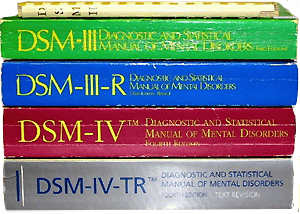AUCD Statement on the Proposed DSM-5 Diagnostic Criteria for Autism Spectrum Disorder
June 6, 2012

|
| Download |
|
|
AUCD strongly supports the development of diagnostic criteria that accurately and reliably identify individuals with autism spectrum disorders (ASD) and provide a foundation for effective intervention and supports. The process to re-define ASD in DSM-5 should be guided by the following principles:
- Create simple and clear diagnostic criteria that can be used to accurately and reliably identify ASD and discriminate ASD from other neurodevelopmental disorders;
- Reflect the best available evidence regarding the diagnosis of ASD;
- Minimize any adverse impact on individuals with current DSM-IV diagnoses of autistic disorder, Asperger's disorder, PDD-NOS, and childhood disintegrative disorder.
Proposed Changes Supported by AUCD
AUCD supports the following proposed changes to the diagnostic criteria for ASD that are consistent with the principles outlined above:
- Under DSM-5, the current diagnoses of autistic disorder, Asperger's disorder, PDD-NOS, and childhood disintegrative disorder will be folded into one diagnostic category of Autism Spectrum Disorders. This change reflects current understanding that ASD is best considered as a spectrum with variable manifestations based on a variety of factors including age, gender, intellectual functioning and/or language ability. It also reflects evidence that these multiple DSM-IV disorders are not reliably diagnosed or well differentiated based on current criteria. Today many individuals with diagnoses of PDD-NOS and Asperger's disorder are not eligible for autism services based on their diagnoses. The change to a single Autism Spectrum Disorder diagnosis may increase equity in both diagnosis and access to services for some individuals on the autism spectrum.
- DSM-IV diagnosis is based on a combination of symptoms from three domains: social; communication; and restricted, repetitive patterns of behavior, interests, or activities (RRB). DSM-5 combines social and communication into one social communication domain, reflecting evidence that the classification of certain behaviors under social or communication domains has been arbitrary and that language delay is not specific to ASD. While the domains in DSM-5 decrease to two, the proposed criteria encompass all symptoms currently included in DSM-IV except for language delay (which can be included as a clinical specifier) and therefore should not exclude most individuals with current DSM-IV diagnoses. In addition, the proposed criteria incorporate changes to expand the opportunity for diagnosis, including examples from different age ranges and severity levels, the addition of sensory sensitivities to RRB, and the change to onset in early childhood rather than specifically prior to three years of age.
Other Comments and Recommendations
- Data/Research
There have been a few recently published studies that have attempted to evaluate the validity of the proposed DSM-5 criteria in comparison with DSM-IV criteria. Findings related to the sensitivity of the new criteria have varied widely while specificity has uniformly been improved. However, concerns have been raised that the methodology used in these studies may not be appropriate to fully assess DSM-5, in part due to their use of retrospective data. Recent data from DSM-5 field trials suggests that the proposed changes will not reduce the overall number of children who receive a diagnosis of ASD, but there is no published information about the study's methodology or its results. Before full implementation of DSM-5 criteria for ASD, it is recommended that (1) all available research be made public for critical analysis and that (2) prospective data is also obtained to better determine whether any individuals on the autism spectrum will be systematically excluded or reclassified by the changes planned for DSM-5. - Clinical Specifiers
To better define the specific needs of those individuals on the broad ASD spectrum, it is also important to evaluate other dimensions that interact with the diagnostic symptoms of ASD. The proposed DSM-5 criteria will incorporate a number of clinical specifiers to define the severity of ASD symptoms, level of language and intellectual abilities, and presence of known genetic causes and associated medical conditions. Such information is critical for planning individualized interventions and supports for persons with ASD. It is recommended that (1) more detail be provided for public review related to the use of clinical specifiers as part of the ASD diagnostic profile and that (2) the clinical specifiers be appropriate for capturing the broad range of clinical presentations and abilities of individuals with ASD. For instance, clinical specifiers should be available to describe varying levels of verbal and nonverbal intellectual abilities. - Social Communication Disorder
A new category of Social Communication Disorder has also been proposed for addition to DSM-5 within the Communication Disorders diagnoses. This diagnosis is intended to capture those individuals with functional impairments in the social and communication domains but without RRB. The implications of this new diagnostic category are unclear, both in terms of diagnostic precision and eligibility for services. Ideally, research related to this proposed diagnosis should be completed before DSM-5 is finalized.
Summary Statement
AUCD is cautiously optimistic about the potential for the new DSM-5 ASD criteria to provide a foundation for more accurate and reliable diagnosis of ASD which can be used to guide the provision of effective intervention and supports. At the same time, AUCD supports access to appropriate evaluation and services for all persons who experience functional impairment in everyday life based on individual needs, rather than diagnostic labels. Continued advocacy for coverage of services to benefit the wide range of individuals defined by the broader ASD spectrum and other developmental disabilities will be critical. Education of the public, training of professionals, and ongoing evaluation will also be essential moving forward as any changes are implemented.







